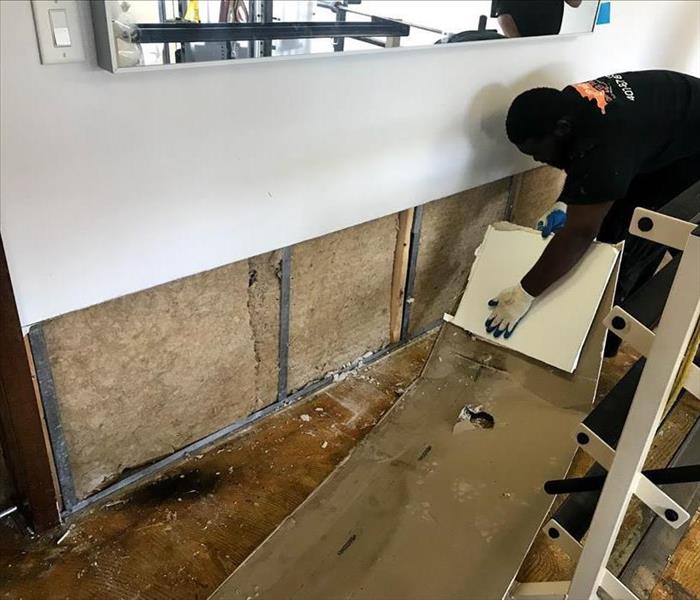What Are Flood Cuts and Why Are They Necessary?
8/20/2021 (Permalink)
Floods are an environmental hazard. They destroy property and cause a lot of inconveniences. A flood may seem harmless since the water is colorless, but it contains ill-causing components such as bacteria and chemicals. Not to mention that it may cause significant financial losses in your home.
A flood cut will help tackle the issues related to flooding.
What are Flood Cuts?
A flood cut is removing the drywall up to a certain height, especially in a flood-affected area. Often, it is about 12-18 inches above the place the waters last marked.
Why Are Flood Cuts Necessary?
A flood cut prevents contaminated floodwater from finding its way into your pipes. After the excess water occupies your area, you may consume contaminated water, leading to illness for the whole family.
By cutting out a section of the drywall, flood cuts will ease access to the affected area. If you want to repair the areas damaged by the water, a flood cut will make it easier. You can treat the afflicted areas directly and more conveniently.
It also enhances the dry-out phase. Keep in mind that a moist wall may develop mold growth on it. You may get respiratory infections such as tonsillitis and pneumonia due to a damp wall. A wet room can also impact your immune system.
How Do I Make a Flood Cut?
Ensure that you have the following Apparatus
• Chalk Line
• Ruler
• Hammer
• Utility knife or jab saw
The following steps will then guide you:
• Create a straight line above the place where the water last touched. The line should be straight so, use a ruler.
• Use a utility knife to cut through the line. Be careful not to cut deep. (To avoid any injuries, wear protective gear)
• If you do not have a utility knife, then you can use a jab saw.
• In the cut section, poke a small hole using a hammer.
• Hold on to the puncture then, gently pull out the intended cut-out. Do not use too much torque to avoid damaging your drywall.
Remove all the insulation underneath the wall. However, if it is a plastic insulating material, you may leave it to dry out on its own.
Opt for dehumidifiers or highly efficient blowers to dry up the section. You can also open up the windows and doors for natural air circulation.
How Will I Restore It?
Know how much material you need in the first place by measuring the cut-out space. You will not end up wasting resources if you get an accurate measurement. Proceed with the detailed steps below:
• Put four drywall clips in the area surrounding the hole. (You should place them on all four corners of the cut area)
• On top of the clips put a drywall screw for support.
• Insert the drywall pieces onto the drywall clips.
• Carefully seal them with a drywall screw. Be careful not to over-tighten.
• To blend it in with the existing drywall, use a compound joint.
As soon as it dries up, you may paint it with mold-resistant paint.
Is It Always a Must to Flood Cut?
No, it isn't. If the water leak was from a clean source, there is no need to cut out your wall. You may use an injection system to wither the wall. A wall with no insulation also does not need a flood cut.
Make Sure You Consult First
Ensure to only practice home maintenance tips that you can handle to avoid incurring losses. Keep in mind that every home needs a specific type of care. So get a consultation from an expert first.





 24/7 Emergency Service
24/7 Emergency Service